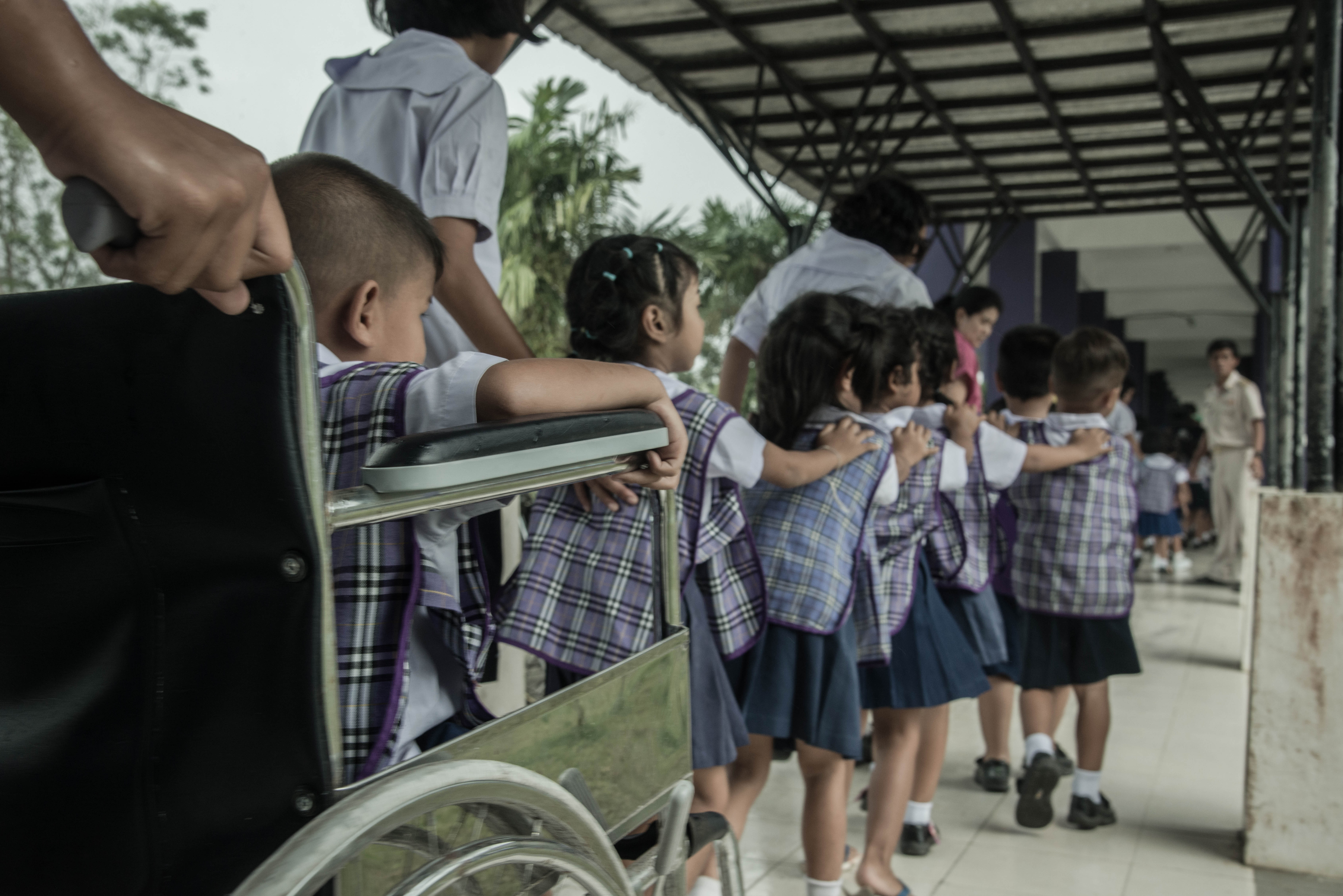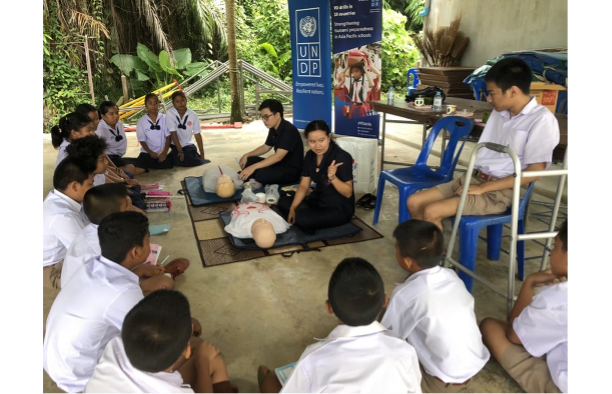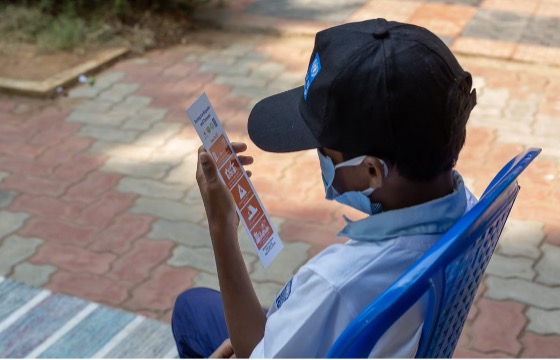UNDP Thailand is working to reduce inequalities among schoolchildren with and without disabilities through the Inclusive Tsunami Preparedness programme and fostering resilience in every child in the face of disasters.
Leaving no child behind: how UNDP is promoting equality and resilience through its inclusive tsunami preparedness programme
July 24, 2023

Schoolchildren participating in an evacuation drill, guided by their teachers in an orderly line. The inclusive drill ensures accessibility for students with physical disabilities, with wheelchair-accessible evacuation routes.
“Twenty years ago, people had inappropriate attitudes towards persons with disabilities,” Dr. Arunee Limmanee explains, “when my parents decided to send me to school, people would say it was a waste of time and money”. Dr. Limmanee is a woman with a disability and works as an assistant professor and advisor on Education and Employment for the Association of the Physically Handicapped of Thailand. “But now, people change, now many persons with disabilities have good education” she continued. While progress has been made in promoting equality and providing educational opportunities for children with and without disabilities, new and concerning inequalities have arisen, particularly during disasters.
In the Asia-Pacific, there are around 700 million persons with disabilities. Surprisingly, risk reduction and preparedness initiatives for tsunamis or early warning systems often overlook the needs and rights of persons with disabilities. The Lowy institute found that persons with disabilities are up to four times more likely to be injured or die during a disaster.

School children with and without disabilities receiving training in first aid.
Stay home: Exclusion from tsunami preparedness
UNDP, in partnership with the Government of Japan, prepares inclusive risk reduction training in tsunami-prone schools in Thailand through its Strengthening School Preparedness for Tsunami initiative throughout the Asia-Pacific, also known as the “Tsunami Project.” The training has been provided in 24 countries since 2017 and includes students with disabilities. As part of its efforts, UNDP has visited schools in high-risk areas to assist them in developing evacuation plans and conducting drills. However, during these visits, the project team discovered that students with disabilities were often being overlooked, as children with disabilities were not actively encouraged to participate in disaster preparedness activities and were often told to “Stay Home”.
To address this issue, UNDP partnered with the Office of the Basic Education Commission under the Ministry of Education, the Department of Disaster Prevention and Mitigation under the Ministry of Interior, the Thai Red Cross Society, and other relevant stakeholders. Together, they developed and launched the first-ever National Guidelines for Tsunami Evacuation Plans and Drills. These guidelines incorporate disability-inclusive measures for evacuation plans and drills. Dr. Limmanee, a facilitator involved in the process, emphasized the importance of inclusion, stating, “We, [persons with disabilities], advocate for ourselves and actively contribute to these guidelines, ensuring that the government works with us on an equal basis.”
“Nothing without us – that is the moto we base our work on” Dr. Limmanee
The National Guidelines include various measures to promote inclusive disaster preparedness. These measures encompass orientation and mobility training for children with visual impairments, ensuring they are acquainted with evacuation routes. Children with hearing difficulties are provided with vibrating wrist straps to serve as warning signals during disasters. Smoke detectors are designed to incorporate both light and sound signals, accommodating individuals with sensory disabilities. Furthermore, the Guidelines introduce disability-inclusive disaster risk reduction, aiming to educate others in the field about effective practices.

A young boy is reading a brochure about early warning systems. The brochure includes diagrams, pictures, and clear signs designed to be easily understood and accessible for children with intellectual, visual, and hearing disabilities.
It starts with a societal shift to see beyond the stigma
As a result of UNDP Thailand’s Tsunami Project, the capacities of approximately 3,000 students and teachers in tsunami-prone schools have been strengthened in collaboration with organizations such as the Association of the Physically Handicapped of Thailand. Moreover, the guidelines introduced by the project have been adopted by 27,000 schools across Thailand under the supervision of the Office of the Basic Education Commission under the Ministry of Education. According to Dr. Limmanee, further efforts should prioritize disaster risk reduction and promote the guidelines on a wider scale, particularly by engaging with small Organizations of Persons with Disabilities in rural areas. Ultimately, Dr. Limmanee says, “the participation of persons with disabilities should be given the highest priority, to make sure that everybody is safe during the disasters.”
To establish truly resilient communities, national and international disaster risk reduction initiatives must be grounded in principles of inclusivity and take a rights-based approach, like the Tsunami Project, or Chile's efforts in enacting new laws to enhance the protection and inclusion of persons with disabilities in disaster management policies. Only when these measures are based on values of equality will we have truly resilient communities.
###
This blog is part of a series highlighting practices showcasing how UNDP and its partners are promoting the inclusion of persons with disabilities in initiatives for building the resilience of communities and nations to the risks and impacts of disasters and climate change. The Disaster Reduction Team (DRT) in Geneva is coordinating with UNDP Country Offices the development of this blog series.
For more information about this initiative please contact: Aticha Chaivichian, Partnership and Engagement Analyst, UNDP Thailand, email: aticha.chaivichian@undp.org

 Locations
Locations